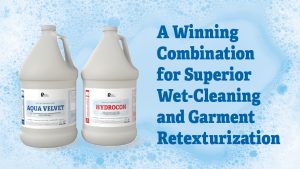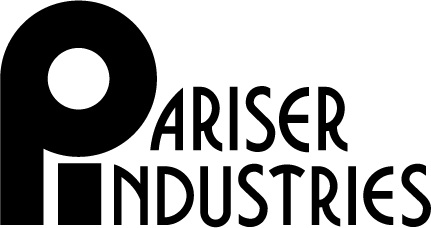Wet cleaning is a safe and hygienic cleaning process in aqueous or water-based systems. To start your path to a successful wet-cleaning program, here are 5 steps to wet-cleaning success:

Step 1: Become educated about the wet-cleaning process
The first step to a successful wet-cleaning program is to learn about the process and how it can positively affect your business. Wet cleaning will help you significantly reduce your dependency on solvent-based cleaning systems. As you gain knowledge and confidence, you will probably find yourself wet-cleaning more and more garments. If your chemical representative is knowledgeable about the wet-cleaning process, they can be a great asset in your program’s development.
Step 2: Understand your comfort level
Work with familiar fabrics you feel comfortable wet-cleaning as you develop your program. A wide range of cotton, linen, and polyester garments can safely be wet-cleaned. Working with these fabrics allows you to learn the process, chemistry, and equipment safely.
With the right equipment and chemistry, the experienced wet cleaner may go well beyond the traditional limits to the point of wet-cleaning 100% of their garments.
Step 3: Educate your employees
The better your employees are trained to understand the wet-cleaning process, the more successful your program will be. There are two essential aspects: your processing team and your counter personnel.
Train your processing team in wet-cleaning chemistry, good fabric classification/evaluation techniques, and equipment usage. A qualified chemical representative will give you a wide range of programs for various garment classifications. Your cleaner should understand how and why these programs are effective and necessary. The cleaner and chemical representative should work closely to learn and fine-tune your programs. Depending on the amount of wet cleaning you decide to do, your finishing department may require new tensioning equipment to make the work easier and reduce labor costs.
Your counter personnel is your direct contact with your customers. Proper training is crucial. They must understand care labels, fabric content, and garment trim issues. They also need to spot potential problems before the garments are processed. More importantly, they need to know how to communicate with customers professionally.
Step 4: Choose the proper equipment and chemistry
There is a wide range of wet-cleaning machines on the market, all with various pros and cons. Decide what works best for your application.
If you plan to do wet-cleaning and shirt laundry using the same machine, choose one that gives you wet-cleaning flexibility while still having the capability to handle the rigors of traditional laundry.
Will you be cleaning comforters in this machine? Do you have an additional machine to handle the more traditional laundry? If this is the case, and you are looking for a wet-cleaning machine to add to your operation, choose one with the broadest range of flexibility in programming and chemical injection options.
A crucial part of the equation in the wet-cleaning process is proper drying. Look for a moisture-sensitive dryer that allows you to control the residual moisture without over-drying fabric.
Lastly, one of the most critical components of being successful in wet cleaning is an experienced, qualified chemical representative. Ideally, this person will be more than just a technician; they will have experience in the cleaning process and be able to consult with you on formulas, garment classification, proper procedures, workflow, garment finishing, and customer awareness.
Step 5: Educate your customers
Educating your customers about your garment care services should be an ongoing process. In addition to wet cleaning traditional “dry-clean-only” garments, many of today’s fabrics can be processed on the wet side. Also, as casual wear is now commonplace in many professional environments, educating your customers on the benefits of professionally caring for these garments is crucial to your business’s success.
Ask your Pariser representative for our Garment Care Guide pamphlets and have them available at the counter. If you have a website, post information about your wet-cleaning services with tips on garment care. Advertise that your business is committed to environmental stewardship; most customers will appreciate that you want to be more environmentally friendly.
Wet cleaning has many benefits. Make your customers aware of your commitment to processing their garments as best as possible.
There are your 5 steps to wet-cleaning success! The wet-cleaning process can be a challenging, but rewarding experience. Good luck! For more information, contact your local Pariser representative or distributor to learn more about our wet-cleaning solutions.
Main office: 800-370-SOAP (7627)
Email: info@pariser.net
Follow us on Twitter, Facebook, and LinkedIn
